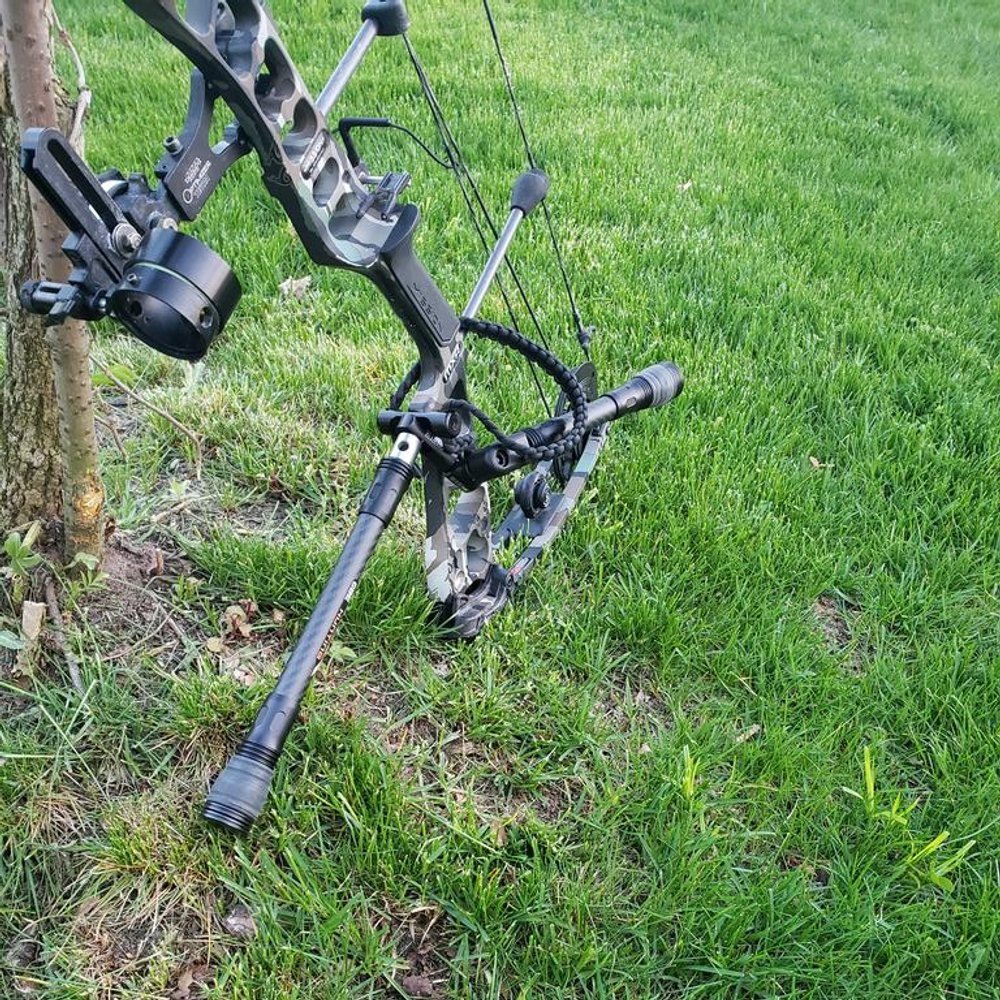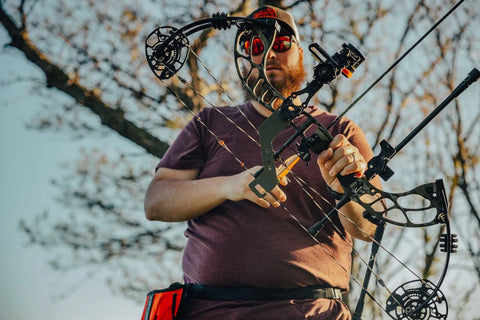Fine-Tune Your Aim: The Scientific Research Behind Compound Bow Stabilizers
Fine-Tune Your Aim: The Scientific Research Behind Compound Bow Stabilizers
Blog Article
Optimizing Your Archery Efficiency With the Right Compound Bow Stabilizer: a Detailed Review
One important yet often-overlooked component in boosting accuracy is the substance bow stabilizer. By understanding the nuances of choose and enhancing a substance bow stabilizer, archers can adjust their devices to elevate their shooting experience to brand-new levels of effectiveness and control.
Relevance of Bow Stabilizers in Archery

In addition, bow stabilizers assist in stabilizing the weight distribution of the bow, which can boost the archer's stability while aiming and firing. By including weight to the front of the bow, stabilizers can decrease the amount of torque experienced upon release, causing a smoother and much more regulated shot - compound bow stabilizer. This weight distribution also aids in holding the bow steady for a longer duration, allowing the archer to aim a lot more properly
Sorts Of Compound Bow Stabilizers
When thinking about the different types of compound bow stabilizers offered, it is important to recognize their distinct functions and features to establish the most ideal option for making the most of archery performance. One of the most usual kinds of compound bow stabilizers include sidebar stabilizers, front stabilizers, and back stabilizers. Sidebar stabilizers affix to the sides of the riser and assistance in balancing the bow throughout the intending procedure. Front stabilizers, additionally referred to as lengthy poles, are connected to the front of the riser and aid in taking in and minimizing any kind of vibrations triggered by the launch of the arrowhead, therefore boosting precision. Back stabilizers, also called rear stabilizers, are mounted to the back of the bow and assist in reversing the weight of various other devices, causing boosted security and steady aiming. Additionally, some stabilizers come with adjustable weights that allow archers to tweak the equilibrium and feeling of their bows according to their preferences, making them flexible options for archery enthusiasts of all degrees.
Factors to Take Into Consideration When Picking
In examining compound bow stabilizers, recognizing the distinct features and functions of each type is crucial for making an informed decision on the most appropriate alternative to enhance archery efficiency. When picking a stabilizer, one should consider the weight of the stabilizer itself. By meticulously evaluating these elements, archers can choose a substance bow stabilizer that lines up with their shooting style and optimizes their overall efficiency on the archery array.
Installment and Change Tips
For ideal efficiency and precision in archery, mastering the setup and change of your bow stabilizer is important. Correct installment starts with attaching the stabilizer to the bow's riser, guaranteeing it is firmly secured.
When adjusting the stabilizer, begin with tiny incremental changes instead than radical modifications. This permits you to evaluate the effect of each alteration precisely. Focus on just how the bow reacts to changes in stabilizer settings and make changes as necessary. Keep in mind that the objective is to discover a setup that reduces hand torque, decreases resonance, and boosts accuracy. Routinely examine the stabilizer's tightness and general condition to guarantee it continues to function optimally. By mastering the setup and modification procedure, you can optimize your archery efficiency and raise your shooting experience.
Upkeep and Treatment Guidelines

When not in use,It is additionally important to store your bow with the stabilizer in a safe and secure and safe area. compound bow stabilizer. Avoid leaving it in extreme temperatures or subjected to direct sunshine for extensive periods, as this might cause damages to the stabilizer. Periodically examine the stabilizer's positioning to guarantee it is still effectively placed on your bow. Adhering to these maintenance and care standards will aid you obtain one of the most out of your bow stabilizer and boost your overall archery performance.
Final Thought
To conclude, choosing the ideal compound bow stabilizer is essential for taking full advantage of archery performance. Comprehending the importance, types, factors to take into consideration, setup and adjustment suggestions, as well as upkeep and treatment standards can significantly affect one's accuracy and uniformity in capturing. By selecting a stabilizer that fits private requirements and choices, archers can boost their total performance and click here now accomplish much better outcomes on the variety or in competitors.
Bow stabilizers play a find out this here vital duty in improving an archer's precision and uniformity by minimizing resonances and stabilizing the bow during the release of an arrowhead - compound bow stabilizer.Additionally, bow stabilizers assist in balancing the weight distribution of the bow, which can enhance the archer's stability while intending and firing. The most usual types of compound bow stabilizers include sidebar stabilizers, front stabilizers, and back stabilizers. Back stabilizers, likewise called back stabilizers, are installed to the back of the bow and assist in counterbalancing the weight of other devices, resulting in enhanced stability and consistent aiming. When picking a stabilizer, one must think about the weight of the stabilizer itself
Report this page